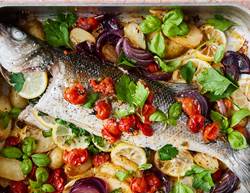Snacks now make up a whole aisle in the supermarket, which only makes it harder to know what’s actually good - and not necessarily in taste but health-wise too. If there a handful of items to look out for in a snack, let it be these:
Sweet Factor?
The general rule of thumb is to avoid a product that contains more than 5-10g of sugar per 100g. A teaspoon of sugar has 4 grams, so you can picture how many teaspoons of sugar your snack contains by dividing the grams on the pack by 4 – and about one teaspoon is enough. With approximately 40 different names for sugar it can be very difficult to work out which ones we should and shouldn’t be consuming. Although fruit can contain a high amount of sugar, it comes with the added benefit of nutrients. Try aiming for unsweeted versions when buying items such as yoghurt and cereals.
A Short List
If you pick up a snack with a paragraph of ingredients, look closer. A longer list of ingredients often means it’s processed and therefore will not hit the health benchmark. You also want to check that the first few ingredients are actually what’s been advertised on the packaging. For example, you don’t want to purchase a nut bar and the first ingredient be a few types of sugars, binders and the fifth ingredient a type of nut. Essentially, a nut bar ingredient list should be short and sweet, less is more!
Clean Binders
Often vegetable oils are used to help bind a product and increase shelf-life. These are typically highly processed and contain trans-fats which are pro-inflammatory. Vegetable oils also contain a higher content of omega-6 fatty acids which in large quantities can contribute further to the inflammatory effect.
Is there Protein?
The objective of a snack is to tie you over until your next meal or help boost energy levels. If you are going to snack and stave off a sugar craving, making sure it’s protein rich will not only satiate but also meet your daily needs. For example, pack a boiled egg, a small tub of hummus to have with dehydrated vegetable crackers or a carrot, raw nuts, nut butter on slices of apple or a protein-bliss-ball.
Fibre Fillers
Fill up on snacks that contain fibre, this will not only satiate but contribute to supporting a healthy gastrointestinal tract. There are two types of fibres, soluble and insoluble, both of which are indigestible parts of plant-based foods but serve different purposes. Soluble fibre acts as a prebiotic and helps feed the gut bacteria via fermentation, whereas insoluble fibre retains water and provides bulk to our stools and regulates bowl movements. If you don’t feel like chomping on some green veggies or root vegetables as a snack, you can still meet your fibre needs with wholegrains. For example, seed crisps containing pumpkin seeds, linseeds, sunflower seeds or an oat bar with nuts.
Clean Factor
Are there any additives, flavours, artificial colours etc? A clue is if you recognise the ingredient or not. Just because a product looks “natural” doesn’t always mean so, which is why you will need to turn over and investigate. If some of the ingredients contain numbers in brackets, you can be assured it’s code for artificial ingredients
Taste
A snack should be satiating and satisfying, if you’ve picked up something that is too bland, is it really worth eating? Look for snack brands that have thought about flavour combinations: hello, peanut & cacao protein bar, garlic & spices kale chips, strawberry & pistachio chocolate. Consequently, you may run the risk of feeling disappointed and reaching for something else.










